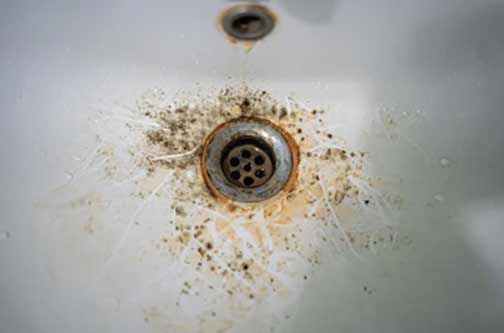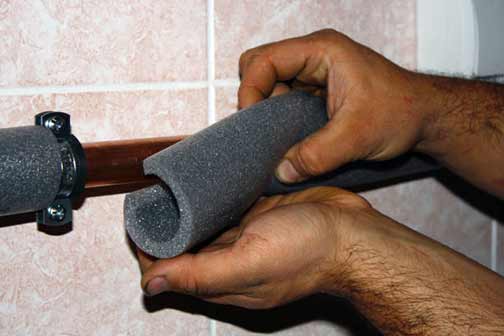
Mold and mold sickness often go hand-in-hand with plumbing problems in your home. If mold is growing in your home, there is a good chance you may also have plumbing malfunctions in the home, says Abacus Avenue Management team. That’s because mold will only grow in places where it has access to moisture.
This is why hidden leaks and undiscovered plumbing problems rank among the top factors that support mold growth in homes. It is easier to eliminate mold and mold sickness from your home if you can identify and solve the home’s hidden plumbing problems.
How do plumbing malfunctions promote mold in your home?
Mold thrives in dark or poorly lit environments with limited airflow and high humidity. These same conditions exist in parts of the home where hidden leaks are most likely to happen, such as under the sink, inside cabinets, behind drywall, and underneath the flooring.
The slow drip of water from worn-out pipes and tiny leaks or fractures in the plumbing provide the moisture that mold needs to thrive. Because these problems are often hard to spot, mold and mildew can grow in your home for a long time without being discovered.
Major locations in your home where you may find mold include:
- Bathrooms and kitchens: As already explained above, leaky pipes below the sink, bathtub, or toilet can create the right conditions for mold growth.
- Basements and crawlspaces: Because they are hidden from direct sunlight and have several plumbing pipes, these are favorite locations for mold.
- Wardrobes and cabinets: Mold will grow in these spaces if water from a leaking pipe seeps into the walls of dank wardrobes and cabinets.
- Behind walls and below flooring: Small leaks in water pipes embedded in the walls and flooring can go unnoticed, allowing mold to breed in these areas.
- Laundry rooms: Laundry rooms are a natural location for mold because of the high potential for water spillage in this part of the house.
- Attics: Just like the crawlspace and basement, attics are another favorite location for mold growth because of their limited lighting.
Common plumbing problems associated with mold
Leaky pipes
All pipe leaks in your home can cause mold if water from the damaged plumbing infiltrates the surrounding areas. This problem is worse in places where the water pipes and drain lines are hidden from view. The longer the problem is allowed to go on, the greater the possibility for mold growth.
Sweaty pipes
Condensation on cold water pipes is a familiar problem in warm regions with high humidity. When this happens, the pipes are said to be ‘sweating.” Pipes that regularly experience condensation may sweat onto nearby materials, creating the right conditions for mold.
Leaky home appliances
Everyday appliances like dishwashers, washing machines, refrigerators, and water heaters will cause mold if they leak. This is often the case when the appliance has a worn-out or damaged hose dripping water onto the flooring or a nearby wall.
High humidity in bathrooms
Due to poor ventilation, steam from hot baths can linger long in the bathroom, causing the environment to become very humid. High humidity in bathrooms can make them conducive to mold growth, especially if water spills on the floor frequently or there are existing leaks.
Poor drainage
Whether due to clogs, aging, or other problems, malfunctioning drainage systems will also promote the growth of mold. Mold may grow inside the drainpipes if they are clogged with debris. Drainage pipe leaks can also make the surrounding areas attractive to mold and mildew.
Burst pipes and flooding
Burst pipes and flooding incidents that cause large volumes of water to be discharged into the flooring, walls, and other parts of the home can also cause mold. If proper steps are not taken to adequately and quickly dry the home, mold can take hold in the affected areas.

Solving plumbing problems associated with mold
Waterproofing high-moisture areas
This is a practical solution for dealing with chronic moisture and mold problems around sinks, bathtubs, toilets, and appliances. Installing waterproofing material in these places will stop water from seeping into walls and flooring, greatly reducing the risk of mold.
Insulate water pipes
If it is not possible to control the humidity level in rooms, insulating exposed pipes in the area can help to stop condensation on water pipes. The insulating material will prevent contact between the warm, humid air and the cold water pipe.
Improve ventilation
Installing exhaust fans in bathrooms, kitchens, and areas of the home with high humidity also helps reduce the amount of moisture in the air. If it is not feasible to install an exhaust fan in the space, a dehumidifier can also help to solve the problems.
Lastly, regular plumbing inspections are a vital step for spotting plumbing problems that cause mold in your home. Monthly surface-level inspections done by you can help identify superficial changes in the plumbing that may be the first signs of trouble.
However, you also need a professional plumber to do a comprehensive inspection of the plumbing. Professional plumbing inspections, if done yearly, will help you stay ahead of issues in your home that can cause mold. Even better, this step will help you save money.

